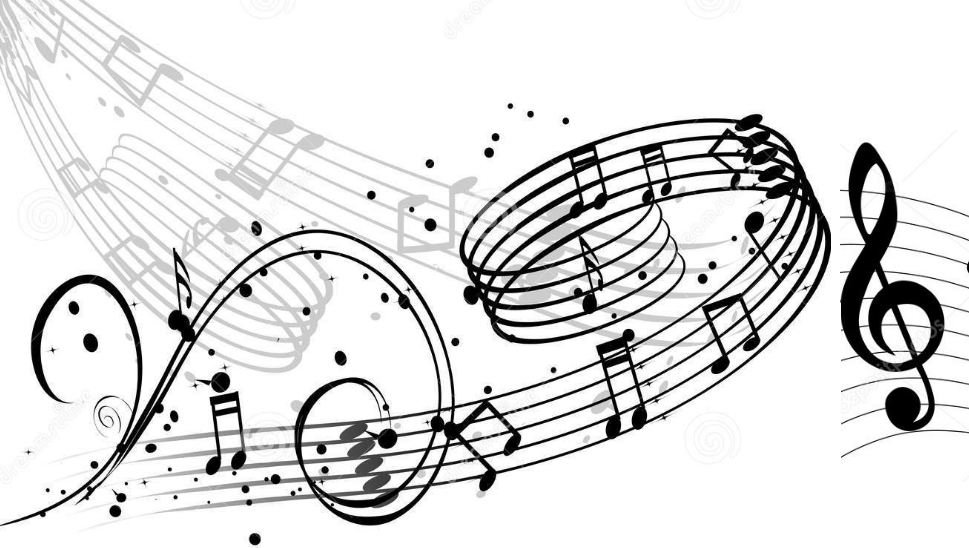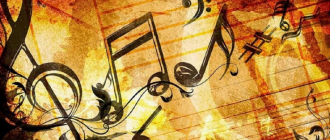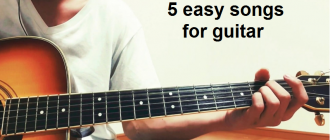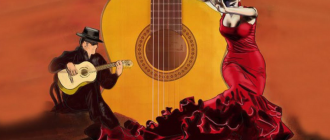In this entry we will see the most important musical signs, the ones that you will find most often in a score. There are many musical signs that are not here but I wanted to gather those that for me are the most important since they appear in many occasions. The explanation of these musical signs will be brief, that is to say, we will make a kind of glossary so that you can consult it from time to time:
The pentagram:
The musical notes and other signs are placed on its spaces and lines. It is like the painter’s canvas.

The treble clef:
It is placed at the beginning of the staff. With its spiral pointing to the second line of the staff, counting from the bottom, it indicates that this line is the note G, that’s why it is called that way. Thanks to it, we can know the name of the other notes. notas musicales.

The bass clef:
Like the treble clef, this one tells us that the note on the fourth line of the staff is an F. It is usually used for instruments whose sounds are lower than the guitar. For example the electric bass or the double bass among many others.

The compass:
They are two numbers, one above the other, that indicate the time unit and the measure unit. The most common are 4/4, 3/4, 2/4 and 6/8. There are other less common ones such as the amalgam measures.

Musical notes:
They are the pillars of music. With them, with rhythms and silences you can make from pop songs to symphonies.

The values of musical notes:
Thanks to the values of each note we can give variety to the music with different rhythms.
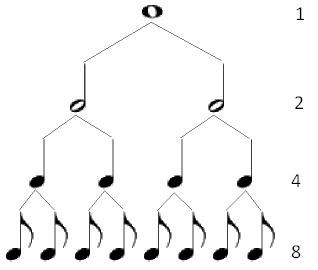
Silences:
Here are the crotchet, quarter note and semibreve rests on a 4/4 time signature. If we had another type of time signature, we would need other time signatures to complete it. For example in 3/4 time, a dotted half note rest.

Prolongation ligatures:
As the name says, they are used to prolong a note. Below you have the equivalent of a semibreve if we were to prolong 4 crotchets. This usually happens between measures, for example when we want to prolong a quarter note on the last beat of a measure so that it continues playing on the first beat of the next measure.

The cauldron:
It serves to prolong a note or a silence indefinitely. This is subjective, that is, you can hold the note as you please. Here the taste of each musician comes into play.

Syncopations:
The notes in the bar usually have a weak or strong rhythm depending on the beats they are on. For example in a 4/4 time signature beats 1 and 3 are the strong beats and 2 and 4 are the weak beats. This can be changed by making the weak beats strong and the strong beats weak with different techniques (igual que en el reggae). For example by lengthening the notes or placing rests on the strong beats and with slurs.

Accidental alterations:
Accidentals are accidentals that appear accidentally on a score and indicate that the note with the accidental next to it has to be raised or lowered by half a tone or one tone depending on the symbol in front of it.

Armor:
The key signature is either sharps or flats that are placed after the treble clef and before the bar and indicate how many accidentals are in a song or piece. In other words, the key signature dictates how the notes written on the staff will behave and they will be affected by the number of sharps or flats in the key signature.

Precautionary alterations:
These are accidentals, flats, sharps, sharps, or crotchets, which are in parentheses. This is done because sometimes when there are many notes or a difficult passage we may not realize that they must be accidentals. Therefore, it is necessary to remember that if in a measure there is a note that appears with accidental alteration, and there are more equal equal notes within the same one, it is necessary to alter it also although it is not put. Well, sometimes it is put for this reason. So as not to mess up.

Signs of repetition:
They usually indicate that the passage that is enclosed within these symbols is to be repeated from the beginning.

Bars followed by silence:
If we play with more musicians, this musical sign indicates that during the six measures, or whatever they are, depending on the number, we have to be silent for the number of measures indicated.

1st time and 2nd time:
When we have the first and second time boxes what the score tells us is that we have to go to the repeat sign and in the repeat skip box 1 to go to box 2. In the case of the example below (very basic by the way) we would have to play the first two bars, then go back to the beginning and skip box 1 and play whatever is in box 2.

Doublets, triplets, quadruplets, quintuplets, sextuplets…
They are rhythmic figures that normally would not fit in a single beat depending on the time signature of the piece. So for example if we have a 4/4 time signature where in each beat only one quarter note or two eighth notes fit, we can group three eighth notes to make them fit. We could also introduce quintuplets, for example, where only 4 eighth notes fit, let’s say in a 4/4 time signature occupying two beats.

High octave and low octave:
These musical signs help us to avoid placing additional lines over notes that are too high or too low. That is to say, if in the score below we have FA, SOL, LA on the treble clef, we have to play the indicated notes as a sharp octave. This translated to guitar, it should be played on fret 13, 15 and 17 and not on 1, 3 and 5 if it did not have the 8th symbol.

Abbreviation of repetition of measures:
These signs are used to avoid having to write the same thing if it is already written before and we want to put it in the next measure or in the ones that are needed.
It has the same function that quotation marks have in the language.

The trill:
It consists of playing the note below the musical sign repeatedly and rapidly alternating it with the note above or below it. In this example we would do for example C, D, C, D, D, C, D, D, C, D…

The arpeggio:
This on the guitar is very fácil de ejecutar. It is simply to place a chord, the one you want, and play from its lowest note to its highest note with only one finger, either the thumb or the index finger or with the pick.

The upper and lower bite:
These are similar to the trill but are executed in a fast manner with an alternation between the note that is written and the note above or below (second note). The first note would be D, E, D, played in a precise and fast way and the second note C, B, C.

Dynamic nuances:
They are usually below the staves and are used by the composer to indicate to the interpreter the intensity with which the passage should be played. The more Ephs there are, the louder the passage is to be played. The more Ps, the more piano or soft.

Chopping:
The “picado” shortens the notes, it is a dot that is placed on top of the note to shorten its value to at least half of its duration.

That said, there are so many musical signs that make music a very wide and fun world. Are there any more you think I should add to the list?
